- ObjectPower Plant
- TranslationTim Kaufmann
- ImagesJonathan Danko Kielkowski
- HistoryTest Waste-to-Energy plant, build between 1994 and 1997 despite protests ongoing by town citizens and ecological activists, building costs have grown during costruction from 32 Million DM to 250 Million DM, build by Simens the plant was a misconstruction and never worked properly, after numerous building alterations, protests and finaly a gas explosion that injured 73 persons in 1998 the plant was shut down the same year and is abandoned ever since.
SBA Fürth
Germany | Documentary | 2011-2014
Millions graves and high tech ruin, the Müll-Schwelbrennanlage (briefly: SBA) at the Fürther harbour.
After only one year in service it was closed down in 1998 and remains abandoned ever since.
In 1985, the company offered a test facility for the recycling of rubbish.
Fürth said the plans had begun and in 1990 it was estimated that the total cost of the project would be 32 million DM. In 1995 it was already 66 million DM and finally the project had struck a proud DM 250 million.
The project was very controversial from the outset, mainly because of highly toxic low-caloric gases produced during operation.
The Federal Environmental Protection Agency presented an alternative waste concept to the SBA, together with “Müll und Umwelt e.V.”. Wide support came from wide circles of the population, several demonstrations took place and in 1993, 27,000 objections were filed against the SBA. The alternative waste concept was then presented at a nine-day hearing in the Nuremberg exhibition center. After construction began, five affected parties complained about the decision, when privatization was still in discussion during the construction phase in 1995, a citizens’ protest was started in Fuerth, which finally fell short of 49% to 51%.
In September 1994 construction work was begun, the plant was privatized before commissioning and sold to the electricity subsidiary UTM GmbH.
Begonnen hat alles 1985 mit dem Angebot von Siemens an Fürth kostenlos eine Versuchsanlage zur Müllverschwelung zu bauen.
Fürth sagte zu, die Planungen begannen und 1990 schätze man noch das die Gesamtkosten für das Projekt sich auf 32 Millionen DM belaufen werden würden. 1995 waren es dann schon 66 Millionen DM und zum Schluss hatte das Projekt stolze 250 Millionen DM verschlugen.
Das Projekt war von Anfang an in der Öffentlichkeit sehr umstritten vor allem wegen hochgiftiger Schwelgase die beim Betrieb entstanden.
Der Bund Naturschutz hielt der SBA gemeinsam mit dem “Müll und Umwelt e.V.” ein alternatives Abfallkonzept entgegen. Breite Unterstützung kam aus weiten Kreisen der Bevölkerung, es fanden mehrere Demonstrationen statt und 1993 wurden 27.000 Einwendungen gegen die SBA abgegeben. In einer neuntägigen Anhörung im Nürnberger Messezentrum wurde dann das alternative Müllkonzept vorgetragen. Nach Baubeginn klagten fünf Betroffene gegen den Bescheid, als noch während der Bauphase 1995 eine Privatisierung ins Gespräch kam, wurde in Fürth erstmals ein Bürgerbegehren gestartet, dass schließlich knapp mit 49% zu 51 % scheiterte.
Im September 1994 wurde dann mit den Bauarbeiten begonnen, die Anlage noch vor in Inbetriebnahme privatisiert und an die Stromkonzern-Tochter UTM GmbH veräußert.


The plant was completed and commissioned in 1997. But it did not start at the beginning. The area was extremely susceptible to disturbances around you had constantly with material jam, Sofwarstörungen and Schwelgasfreisetzung to fight. Normal operation was not possible.
Concerned residents established the “Citizens watch the Schwel-Brenn-Anlage” campaign, which documented all these incidents.
The many problems and faults led to the plant being rebuilt and reworked in 1998.
In August 1998 it came with a Probelauf to the decisive incident which should be the Aus for the plant.
Metal braids in the garbage led to a material jam, destroying a charcoal curd, which caused explosive toxic gases and injured 73 people (report).
After that, the system was no longer raised. The bulk of the cost of failure was borne by Siemens.
However, the city of Fürth also lost 4.4 million € and the county a further 2.5 million € due to a risk participation.
In 1999, the investment for a symbolic Euro plus land cost was sold to the contractor Günther Karl, who sold parts of the property as well as some machines from the interior of the plant in the following year.
Since 2008, the SBA belongs to Max Aicher GmbH. What is to happen with her is currently not known. Initially, Max Aicher GmbH had to scrape itself before the plant itself. Shortly thereafter, however, the plant was again sold and thus to be rid of.
The plant itself is still largely preserved today. Porter’s house, driveway, chimneys as well as some equipment from the inner are disappeared nevertheless the plant is relatively unaffected.
Cars, computers, furnishings and food in the interior testify to the fact that people have worked here until recently.
Fertig gestellt und in Betrieb genommen wurde die Anlage 1997. Rund lief sie aber selbst zu Beginn nicht. Die Anlage war extrem Störanfällig um man hatte ständig mit Materialstau, Sofwarestörungen und Schwelgasfreisetzung zu kämpfen. Eine normaler Betrieb war nicht möglich.
Besorgte Anwohner gründeten die Aktion “Bürger beobachten die Schwel-Brenn-Anlage” welche all diese Zwischenfälle dokumentierte.
Die vielen Probleme und Störungen führten dazu das die Anlage 1998 nochmals umgebaut und nachgebessert wurde.
Im August 1998 kamm es dann bei einem Probelauf zu dem entscheidenden Störfall welcher das Aus für die Anlage bedeuten sollte.
Metallgeflechte im Müll führten zu einem Materialstau und zerstörten eine Schweltrommeldichtung, wodurch explosionsartig giftiges Schwelgas austrat und 73 Personen verletzte ( Bericht ).
Danach wurde die Anlage nicht mehr Hochgefahren. Den größten Teil der Kosten für das Scheitern trug Siemens.
Durch eine Risikobeteiligung verloren aber auch die Stadt Fürth 4,4 Millionen € und der Landkreis weitere 2,5 Millionen €.
1999 wurde die Anlage für einen Symbolischen Euro plus Grundstückskosten an den Bauunternehmer Günther Karl verkauft welcher in den Folgejahren Teile des Grundstückes sowie einige Maschinen aus dem inneren der Anlage weiterverkaufte.
Seit 2008 gehört die SBA der Max Aicher GmbH. Was mit ihr passieren soll ist derzeit nicht bekannt. Anfangs hatte die Max Aicher GmbH noch vor die Anlage selber abzuwracken. Kurz darauf bemühte man sich aber schon die Anlage wieder zu verkaufen und somit los zu werden.
Die Anlage selber ist heute noch größtenteils erhalten. Pförtnerhaus, Einfahrt, Schornsteine sowie einige Gerätschaften aus dem inneren sind zwar verschwunden dennoch wirkt die Anlage relativ unberührt.
Autos, Computer, Einrichtungsgegenstände und Nahrungsmittel im inneren zeugen davon das hier noch bis vor kurzem Menschen gearbeitet haben.
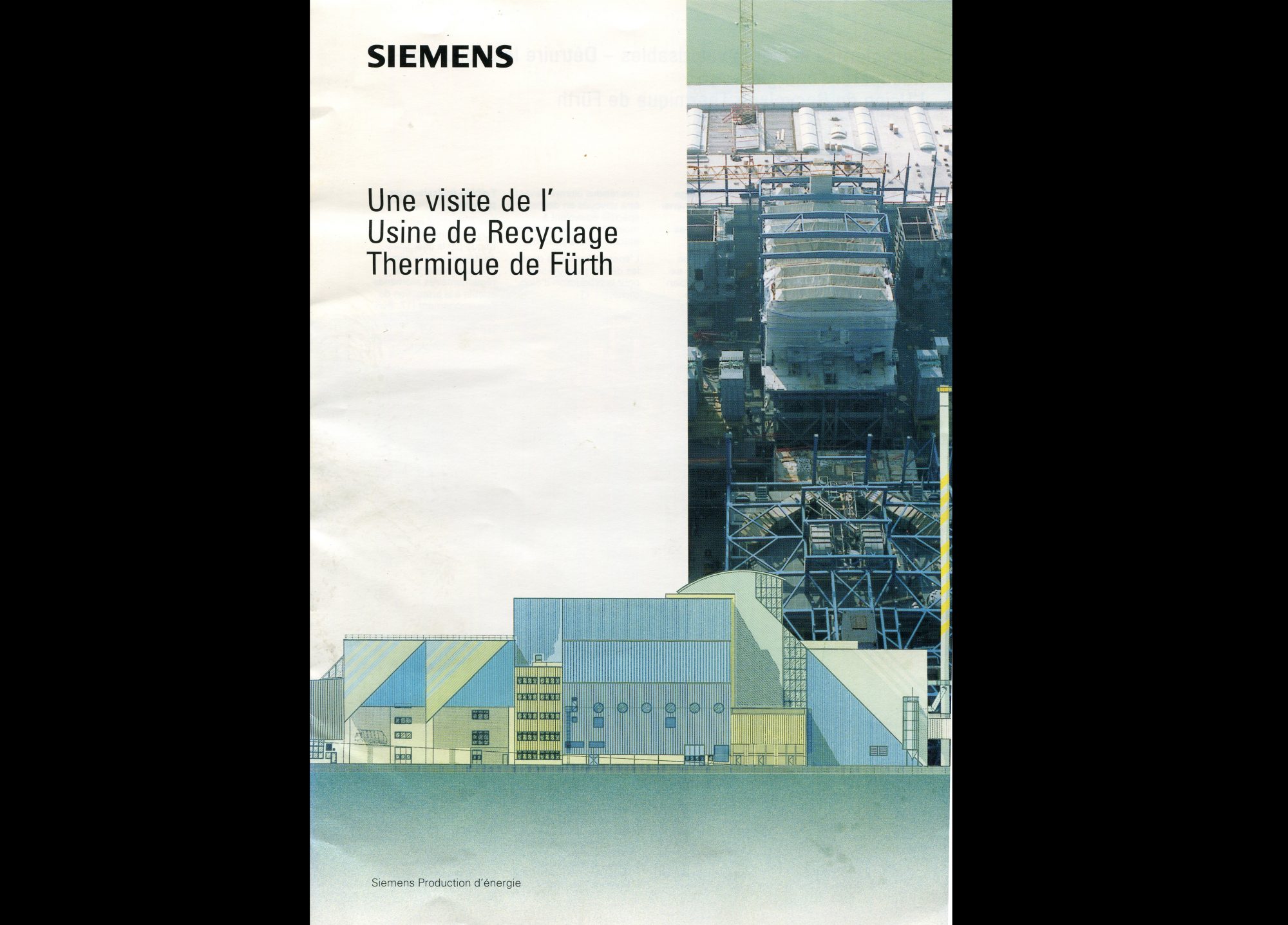
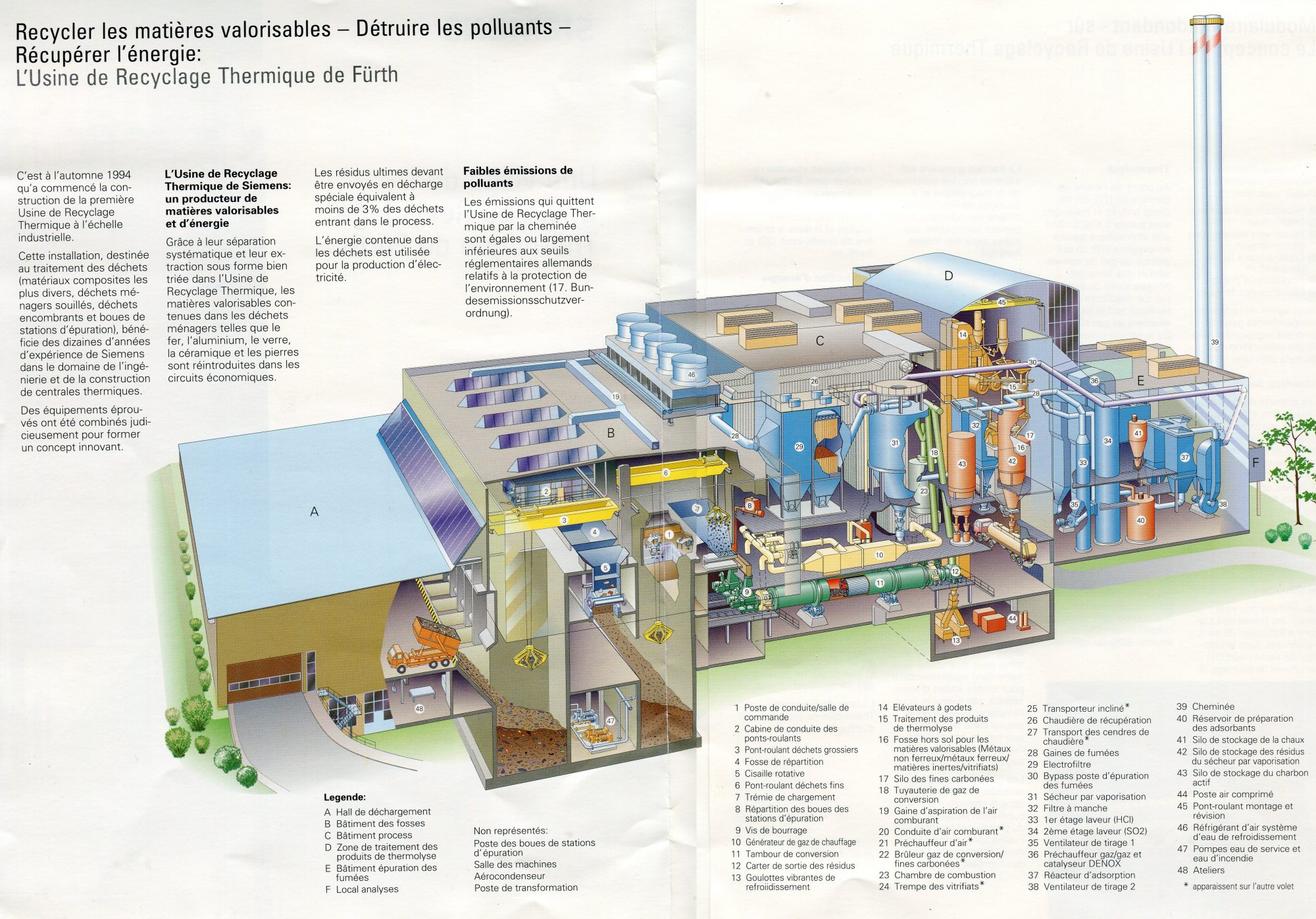
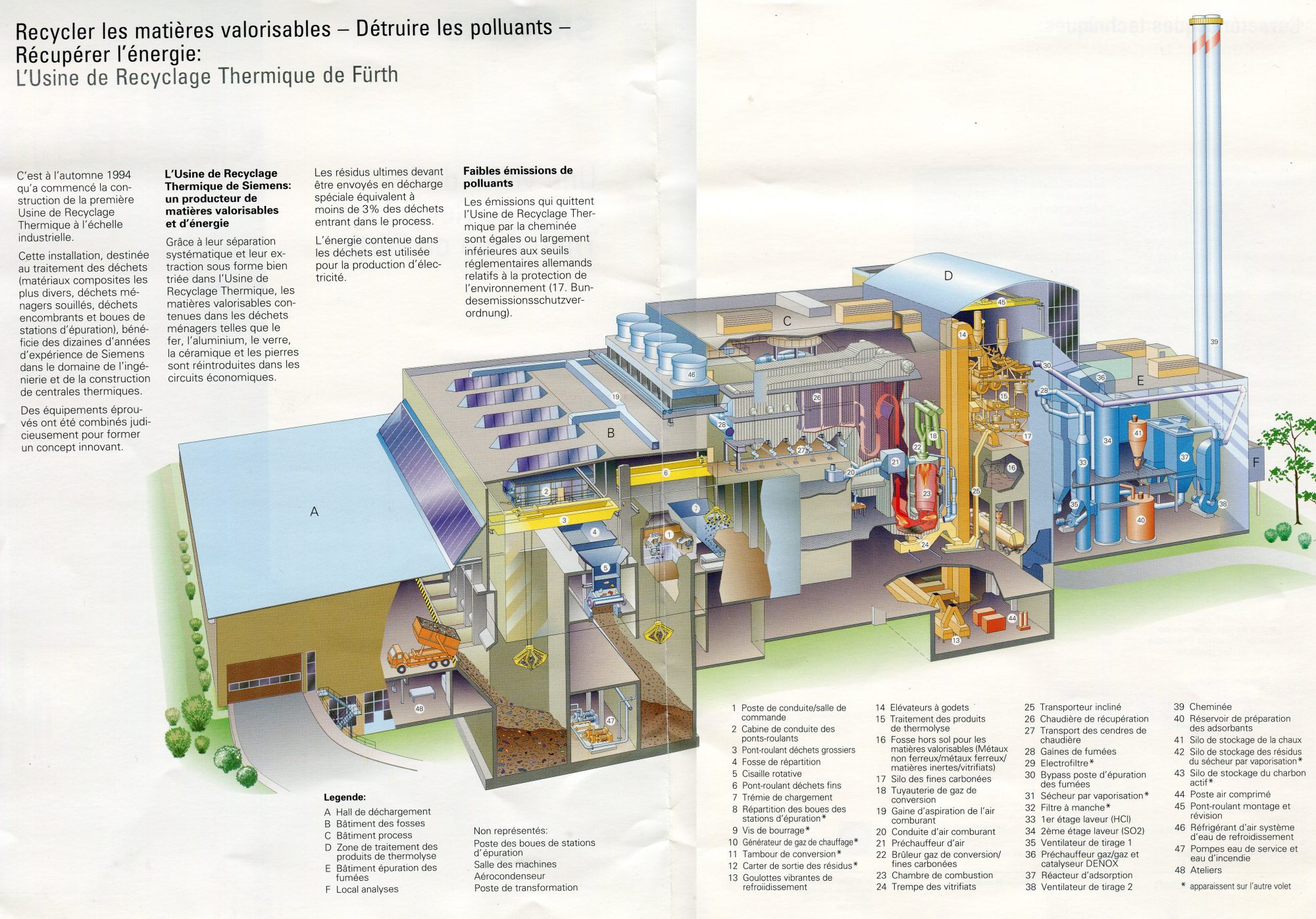
Advertising brochure for the SBA. Siemens also tried to sell the plant to other European countries.
In September 2011, I had the opportunity to explore and photograph the facility and was quite impressed with this building.
We started off in the part (C) of the plant where the complete smelting and electricity generation process took place.
Im September 2011 hatte ich die Möglichkeit die Anlage zu erkunden und zu fotografieren und war ziemlich beeindruckt von diesem Gebäude.
Los ging es in dem Teil (C) der Anlage in dem der komplette Schwel und Stromerzeugungs Prozess ablief.
A maze of tubes, tanks and filters winds up to the ceiling one floor higher. We are located in the largest hall (C) in the building. The hall is 50 meters hight. Recing from minus 10 meters in the basement up to 40 meters overground. Ceilings, corridors and staircases are only covered with grilles, which is particularly appealing in the upper levels. You will find spots were you have a clear view from the top to the bottom of the hall.
Ein Stockwerk höher schlängelt sich ein Labyrinth aus Rohren, Tanks und Filtern bis zur Decke. Wir befinden uns hier in der größten Halle (C) in dem Gebäude. Vom Keller in 10 Meter tiefe geht es hier über 50 meter hoch. Decken, Gänge und Treppen sind hier nur mit Gittern belegt, was vor allem in den oberen Ebenen ganz reizvoll ist. So kann man an einigen wenigen Stellen von ganz oben bis runter in den Keller blicken. Insgesamt ist dieser Bereich aber ziemlich zugebaut und man bekommt nur an wenigen Stellen ein Gefühl für die tatsächliche größe der Halle.
Hall E. Located at the north part of the plant and a good chunk smaller than Hall C. Two large chimneys were located here but were demolished short after the shutdown of the plant. Huge holes in the facade still indicate where the chimney used to stand.
Halle E. Im Norden der Anlage und ein gutes Stück kleiner als Halle C. Hier befanden sich 2 größe Schornsteine die nach der Stillegung der Anlage abgerissen wurden. In der Fassade klaffen größe Löcher und zeugen so vom einstigen Standort der Schornsteine.
On the roof. At a height of 30 meters, you enter the roof of Hall E and a little higher at 40 meters the roof of Hall C. Here you have a pretty cool view of the surrounding countryside.
Auf dem Dach. Auf 30 meter Höhe betritt man das Dach von Halle E und ein Stück höher auf 40 meter das von Halle C. Hier hat man einen ziemlich coolen Blick auf das Umland.
The Trashbunkers (B). Here, the garbage was distributed, pressed and then distributed by 4 large cranes on the various conveyor belts to burn. The 2 large garbage bins in this hall reach to a depth of 25 meters and make quite an impression. In the middle of this hall is a three-sided glazed room from which the cranes were controlled and in which some of the “control chairs” are still preserved.
Der Müllbunker (B). Hier wurde der Müll verteilt, vorgepresst und anschließend von 4 großen Kränen auf die verschiedenen Förderbänder zum verbrennen verteilt. Die 2 großen Müllbunker in dieser Halle reichen bis in eine Tiefe von 25 Metern. In der Mitte dieser Halle befindet sich ein zu 3 Seiten hin verglaster Raum von dem aus die Kräne gesteuert wurden und in dem noch einige der “Steuerstühle” erhalten sind.
Next to it is Hall A. Here, the garbage trucks have tipped their load into the garbage bunkers. The hall is now used by the fire fighters for exercises.
Neben an befindet sich Halle A. Hier haben die Mülllaster ihre Ladung in die Müllbunker gekippt. Die Halle wird heute von der Feuerwehr für Übungen genutzt.
The office tract. It is still completely furnished and full of equipment and stuff. Building plans, information brochures, propaganda material on SBA and many old photos. Quite interesting.
Der Bürotrakt. Neben der kompletten Einrichtung findet man hier Baupläne der Anlage, Info-Broschüren, Propagandamaterial zum Thema SBA und viele alte Fotos. Ziemlich interessant.
Exterior views
Außenansichten
This article appeared for the first time on the blog www.gesichterderstadt.wordpress.com on the 17th of February in 2014. Special thanks to Mr. Eisl and Mr. Geissler from Max Aicher GmbH for the photo approval and the guided tour of the facility.
Dieser Artikel erschien zum ersten mal auf dem Blog www.gesichterderstadt.wordpress.com am 17 Februar 2014.
Ganz besonderen Dank an Herrn Eisl und Herrn Geissler von der Max Aicher GmbH für die Fotogenehmigung und die Führung durch die Anlage.
Sources and text excerpts

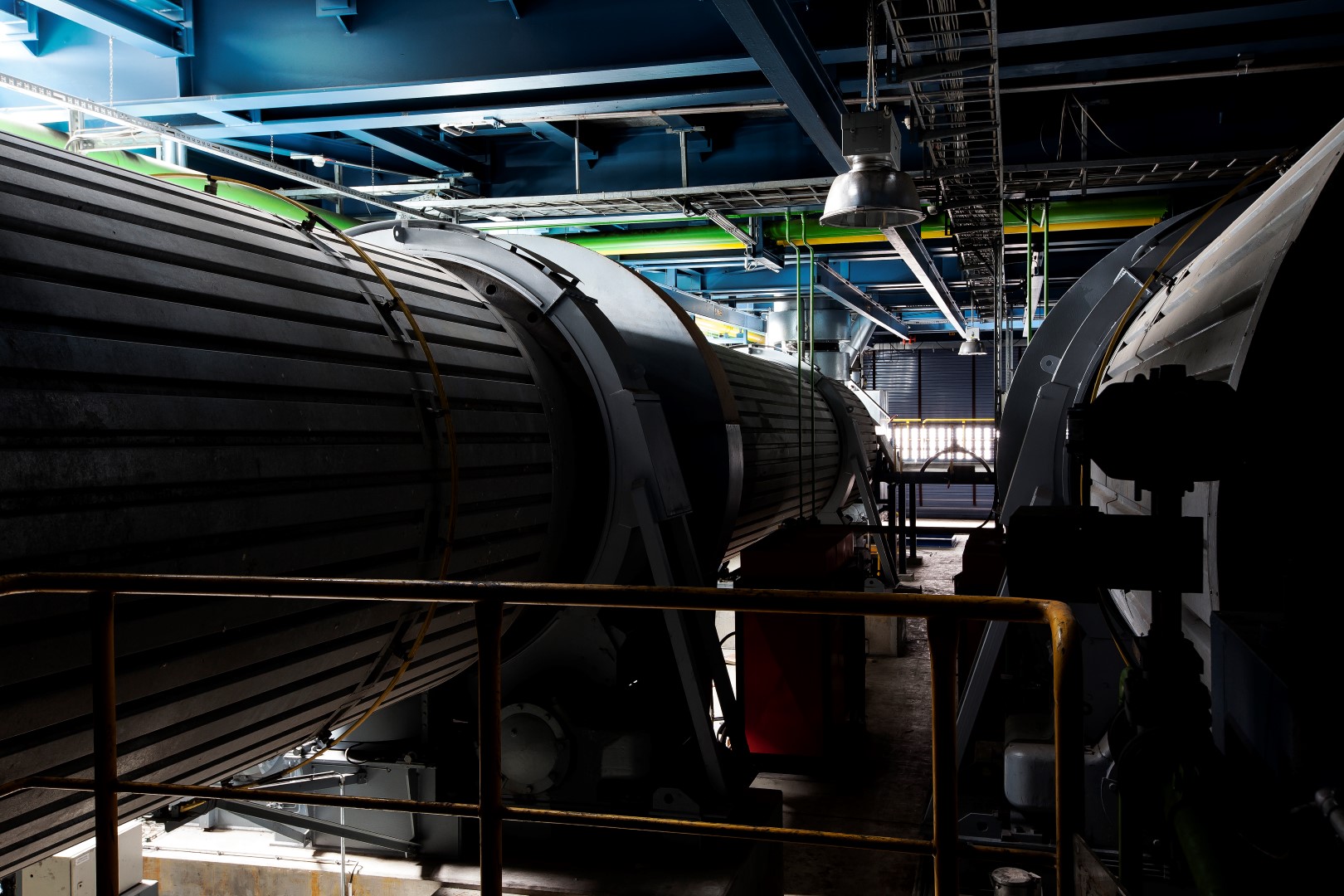



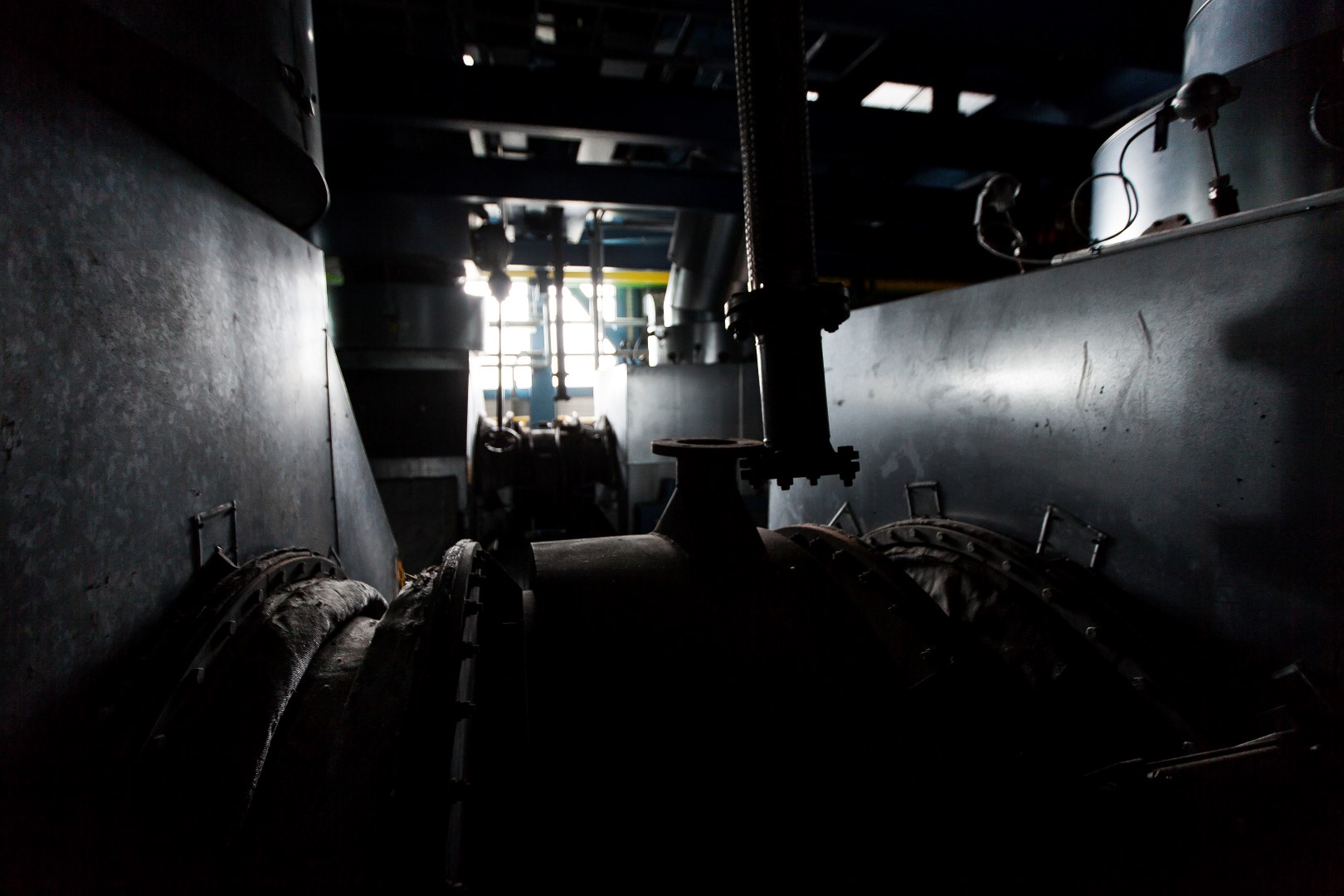

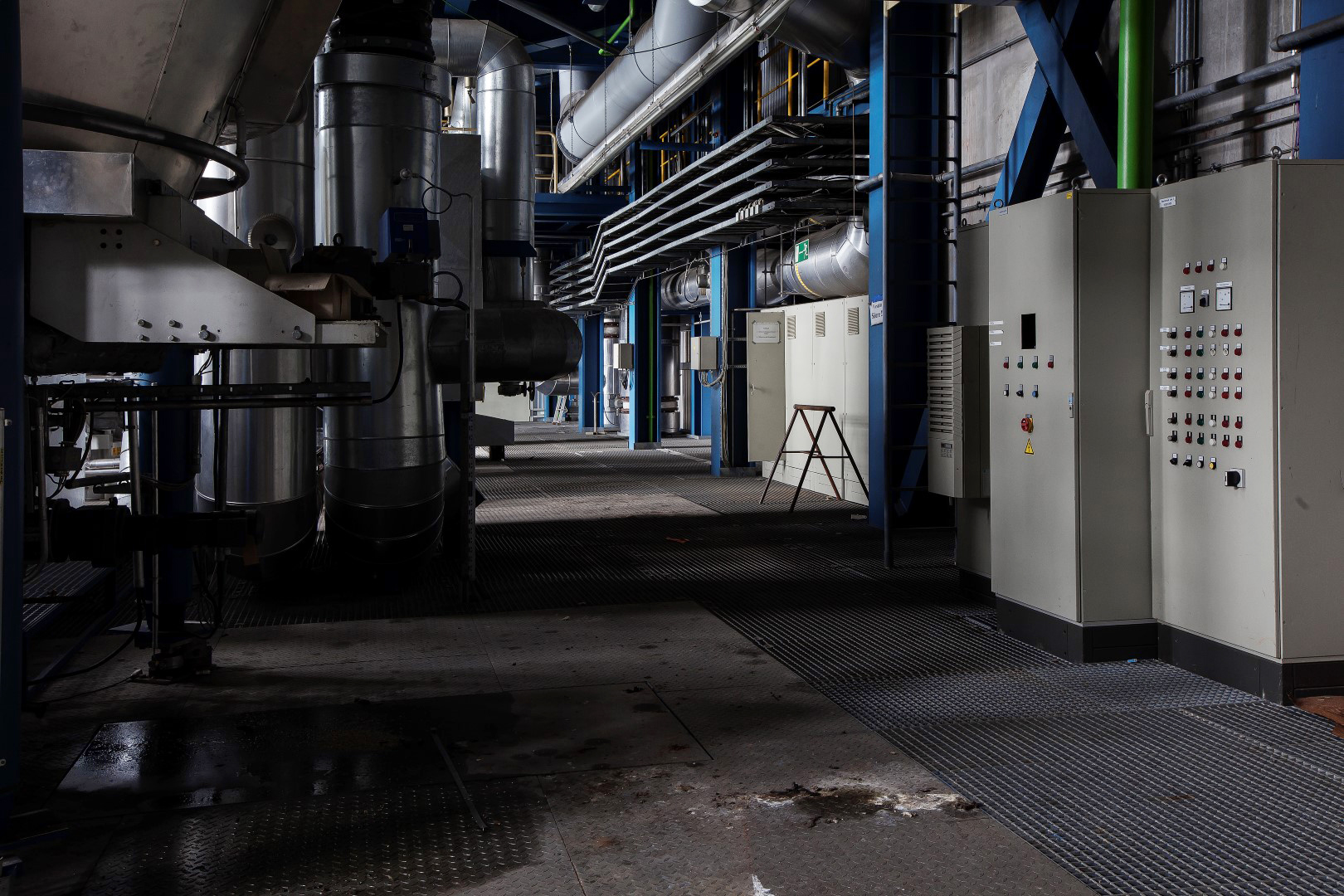







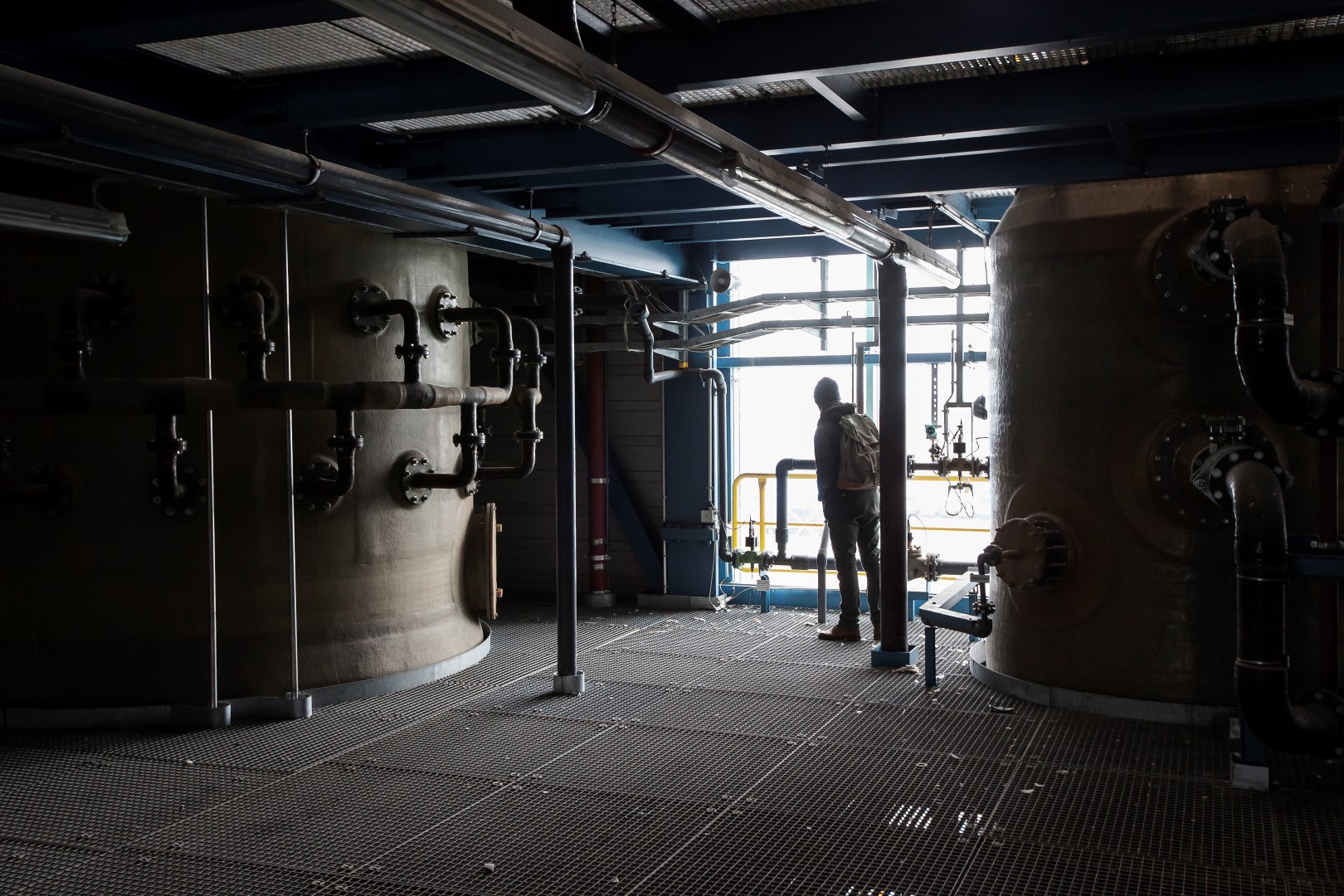

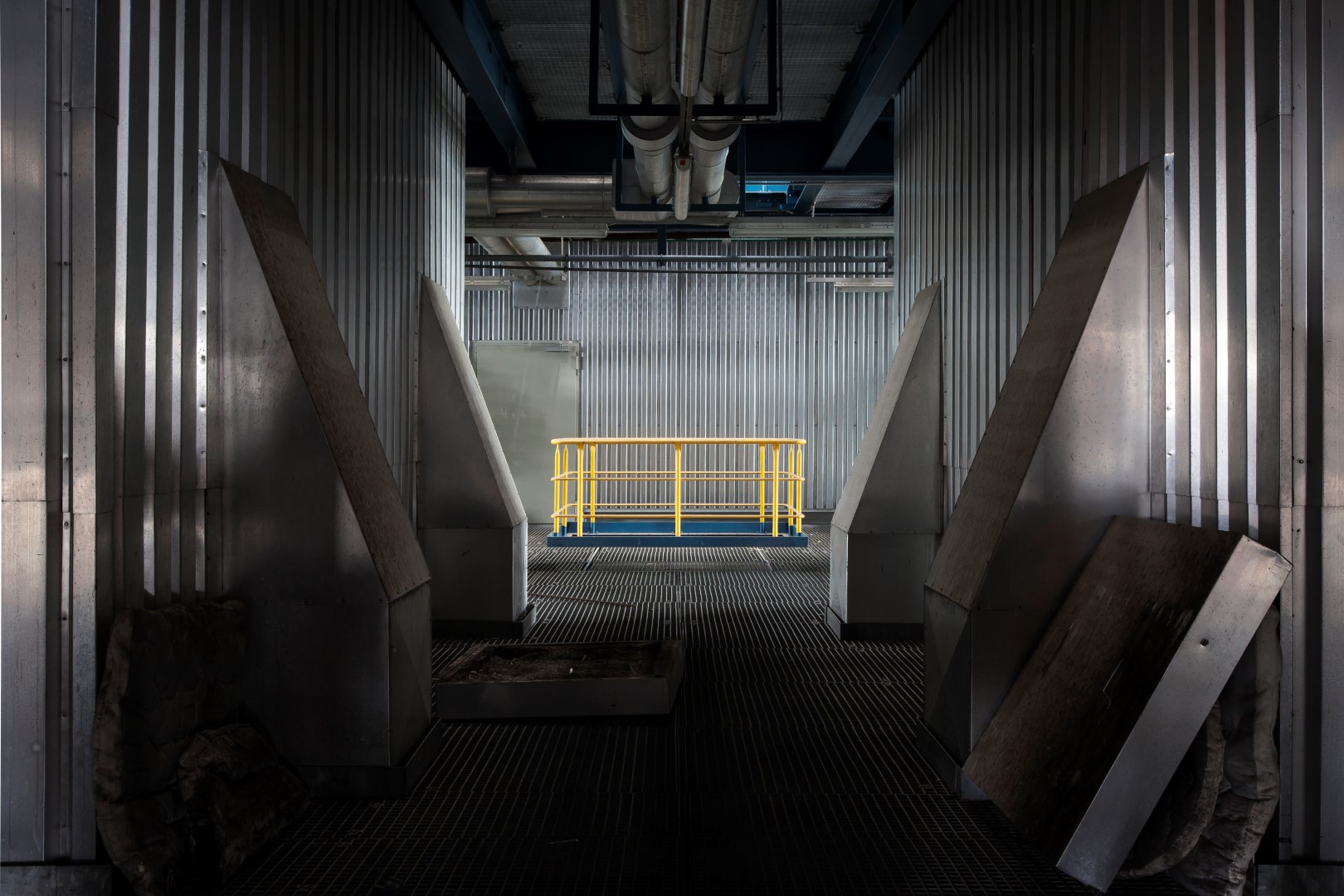



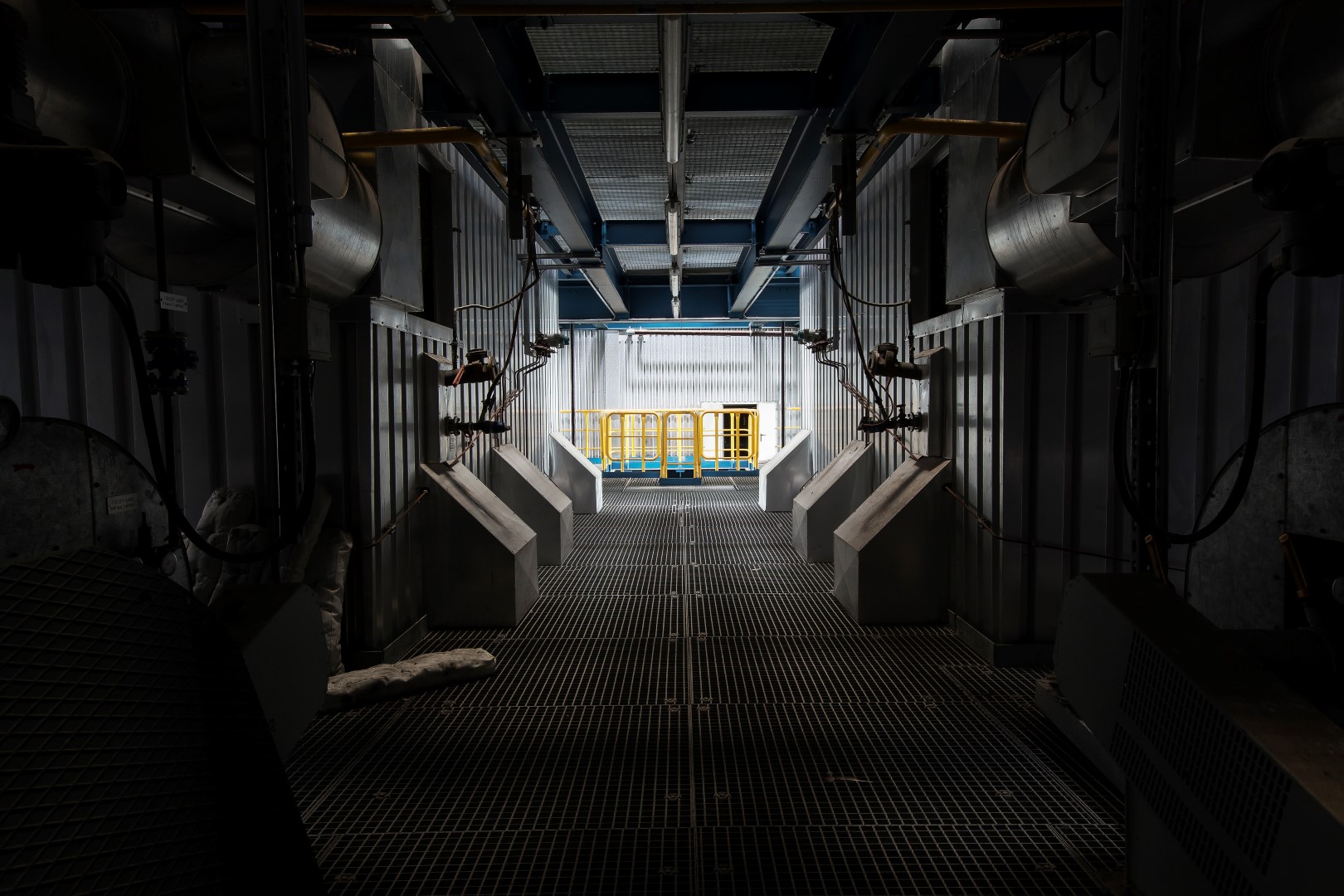

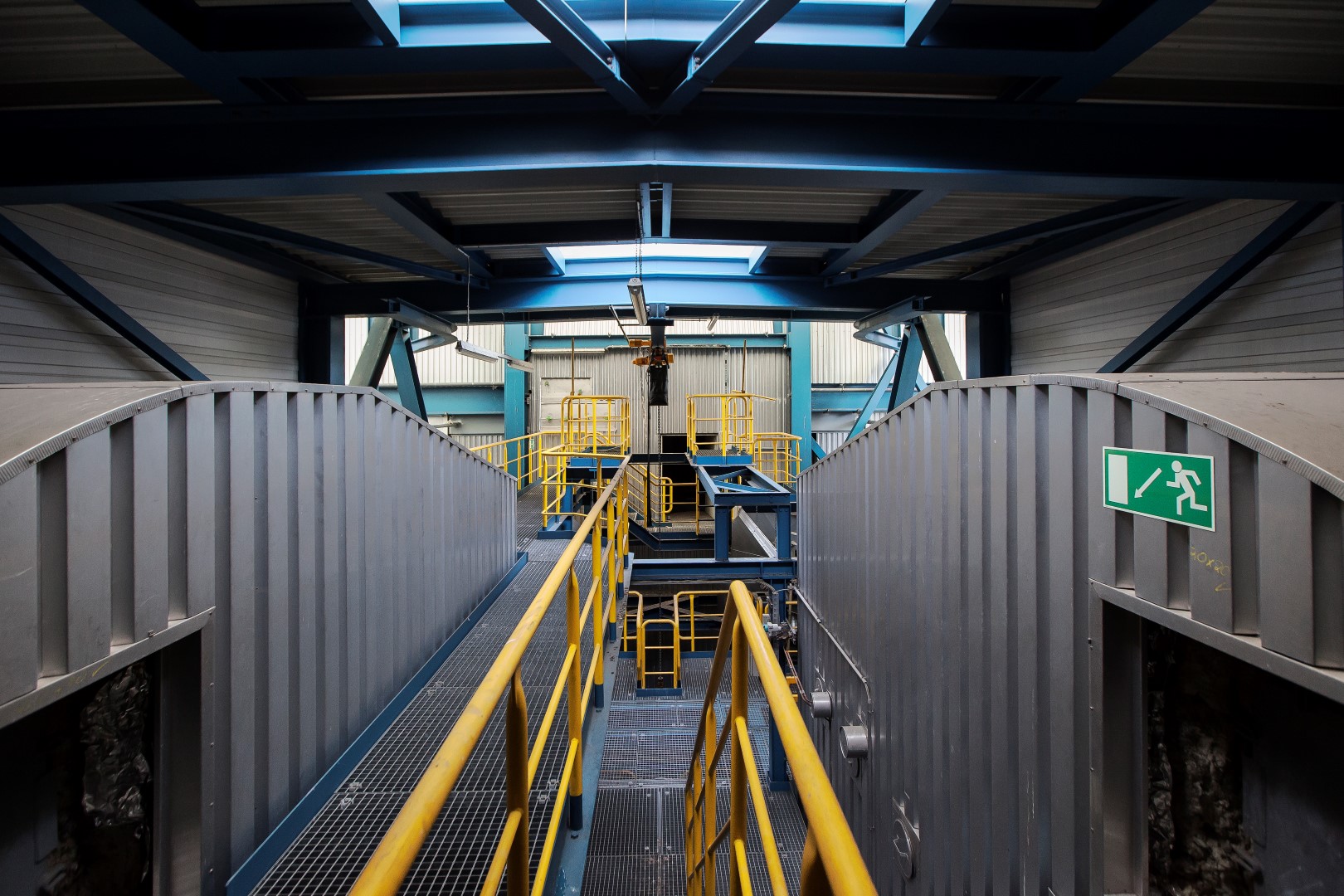
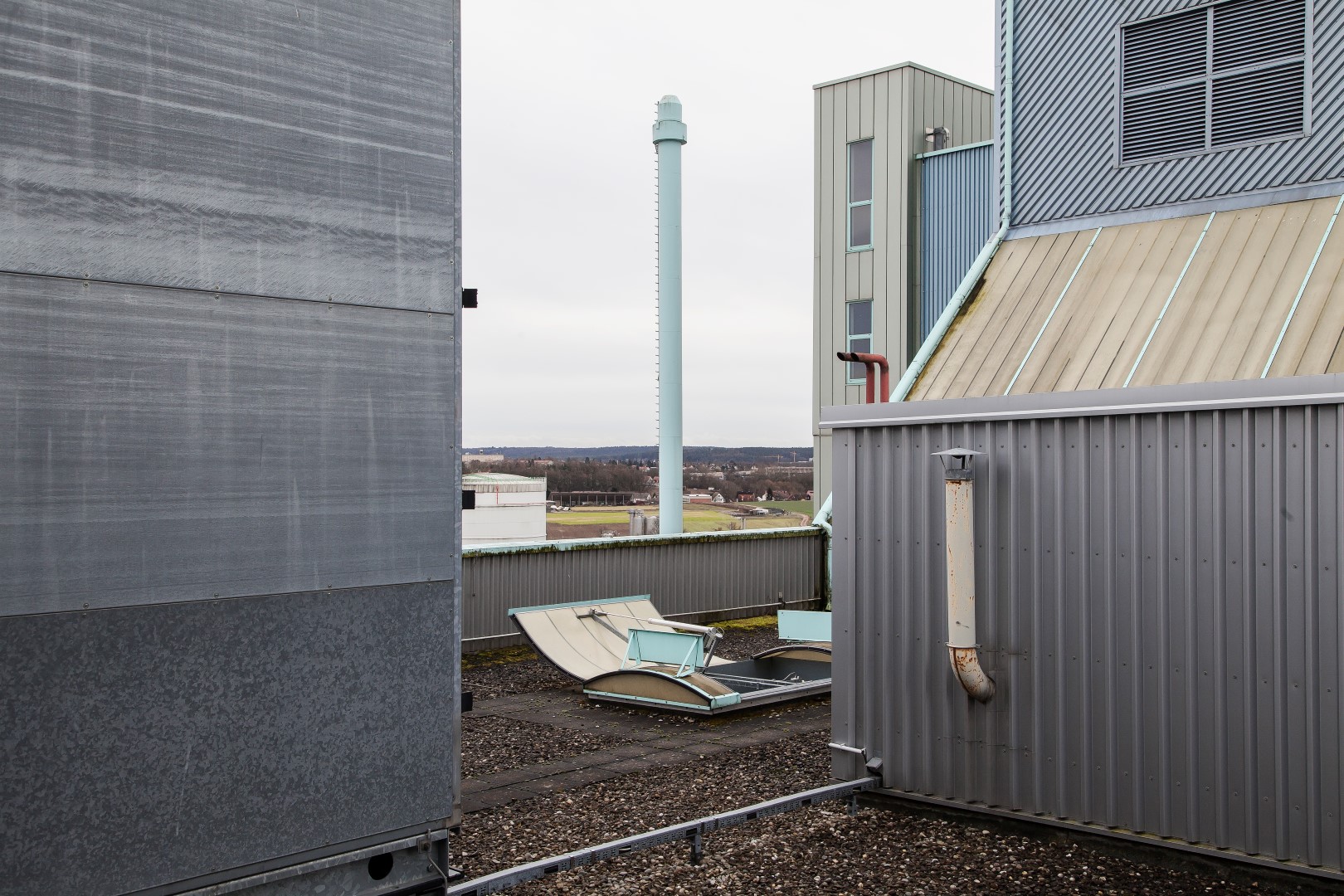


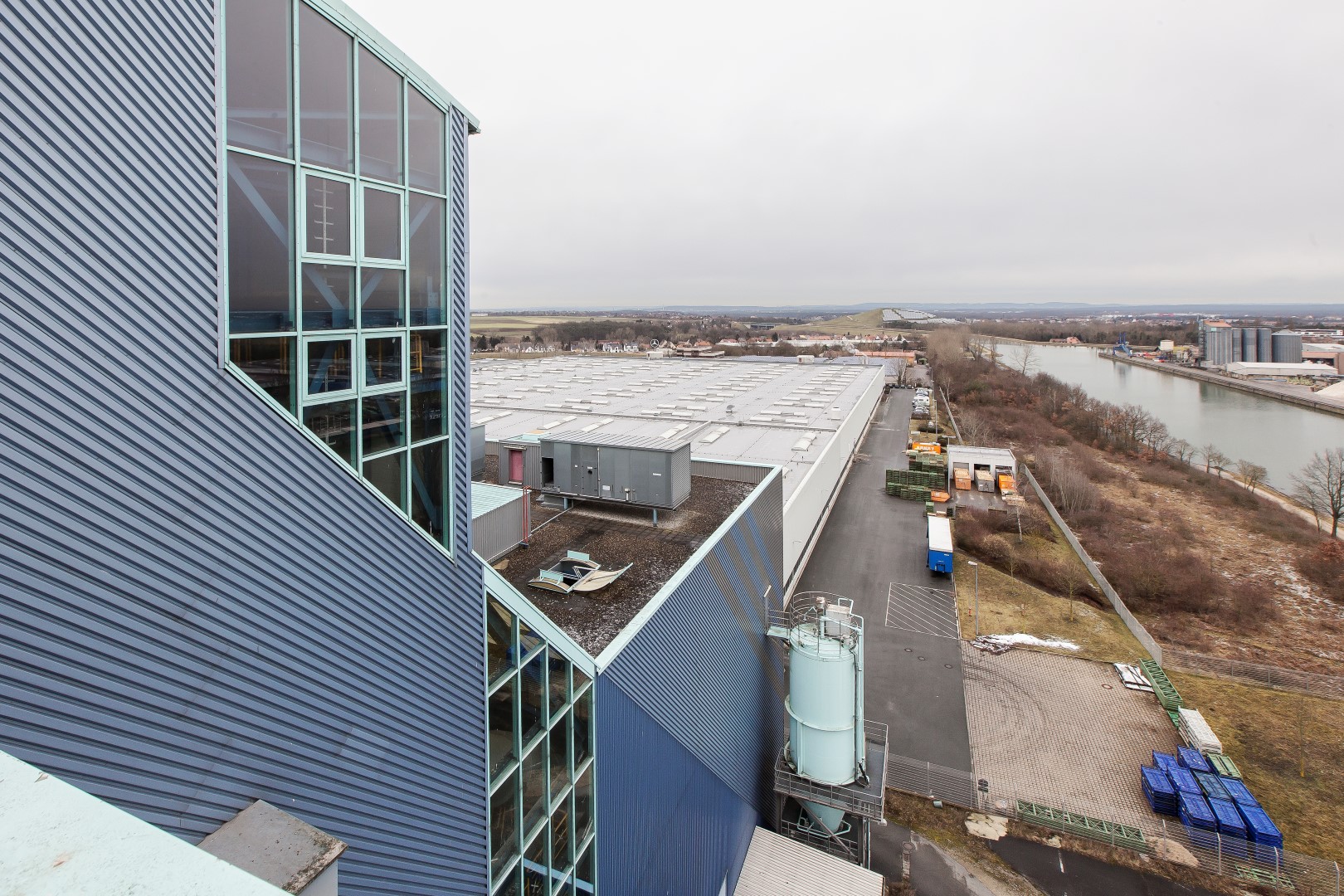


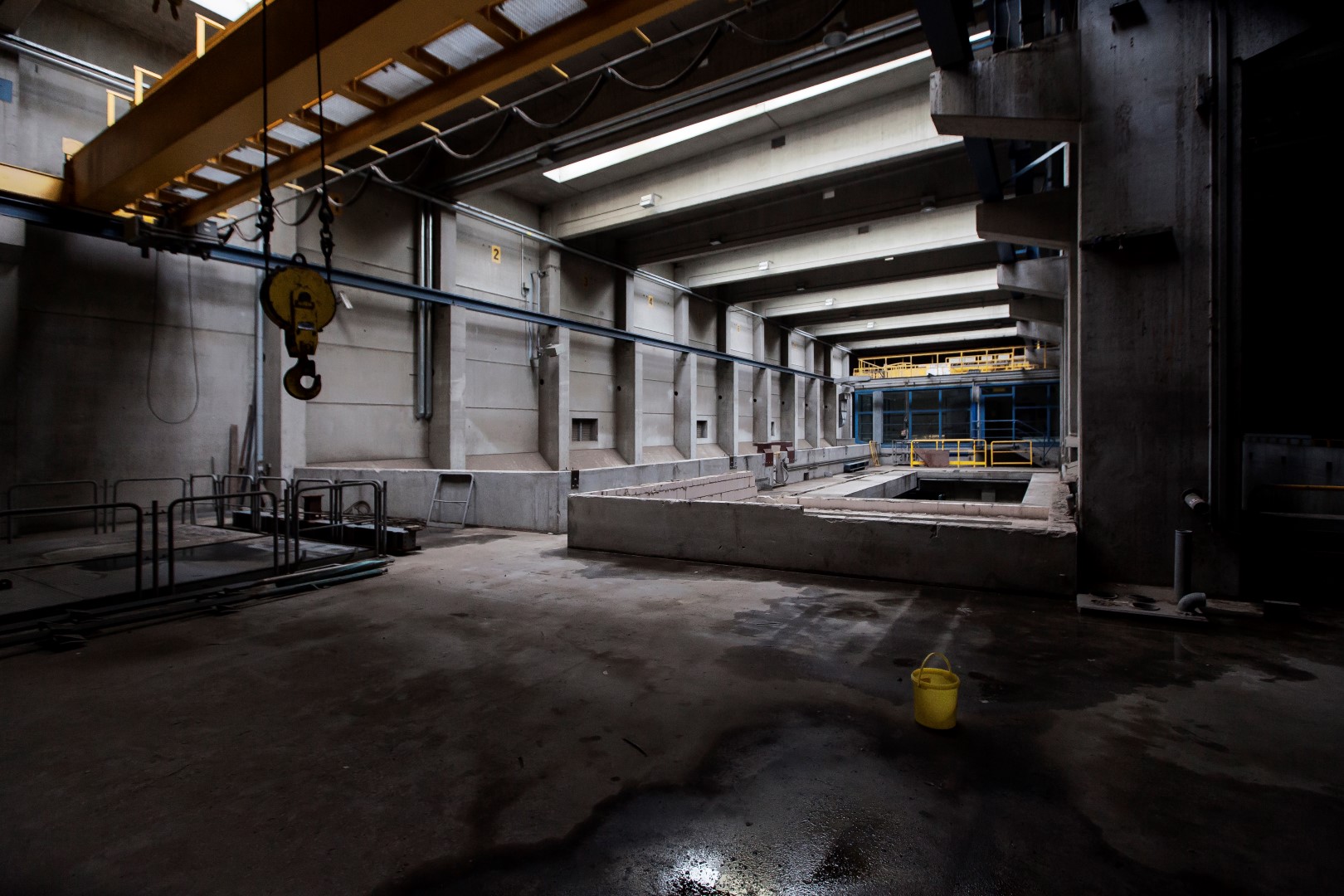




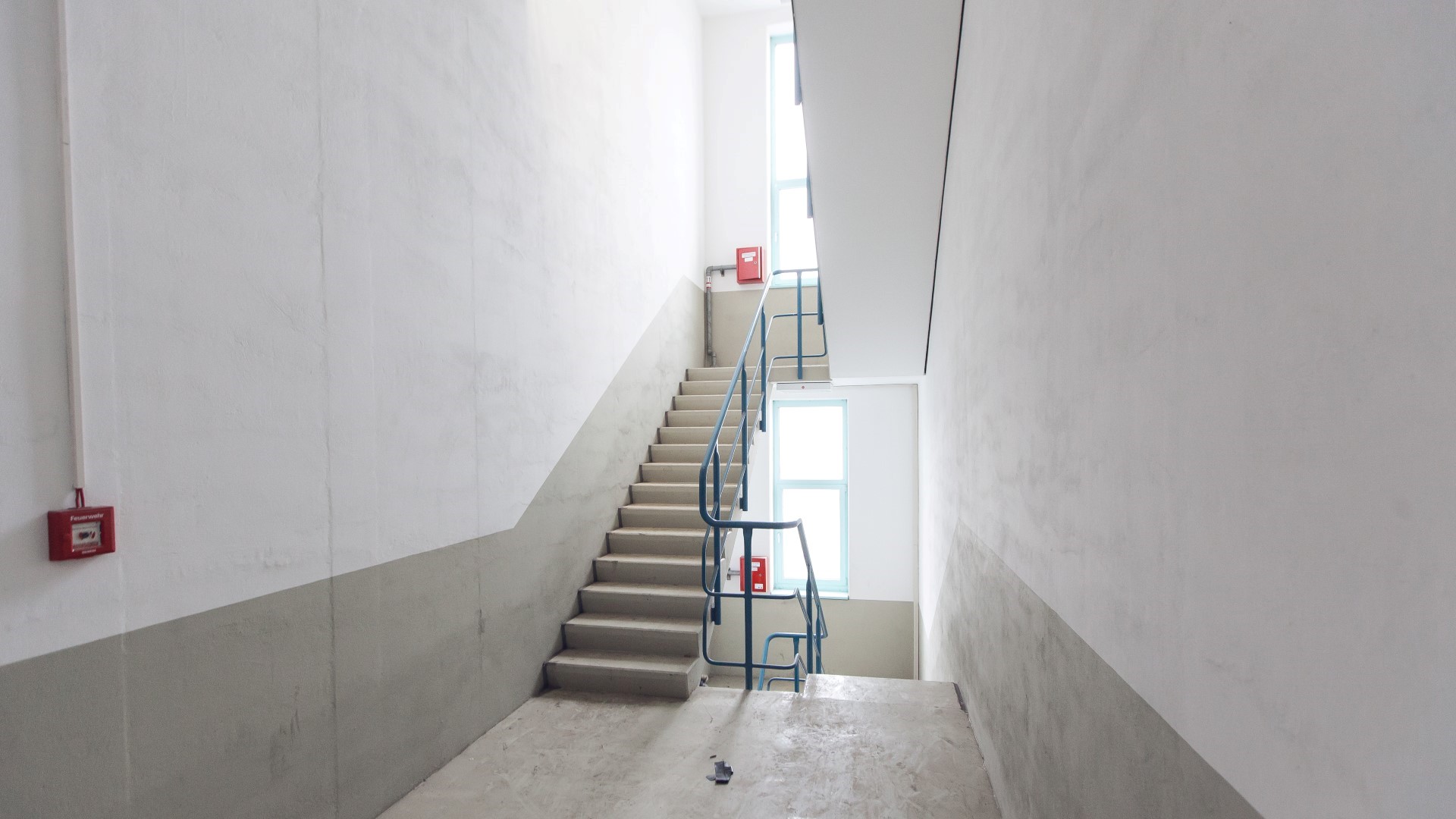
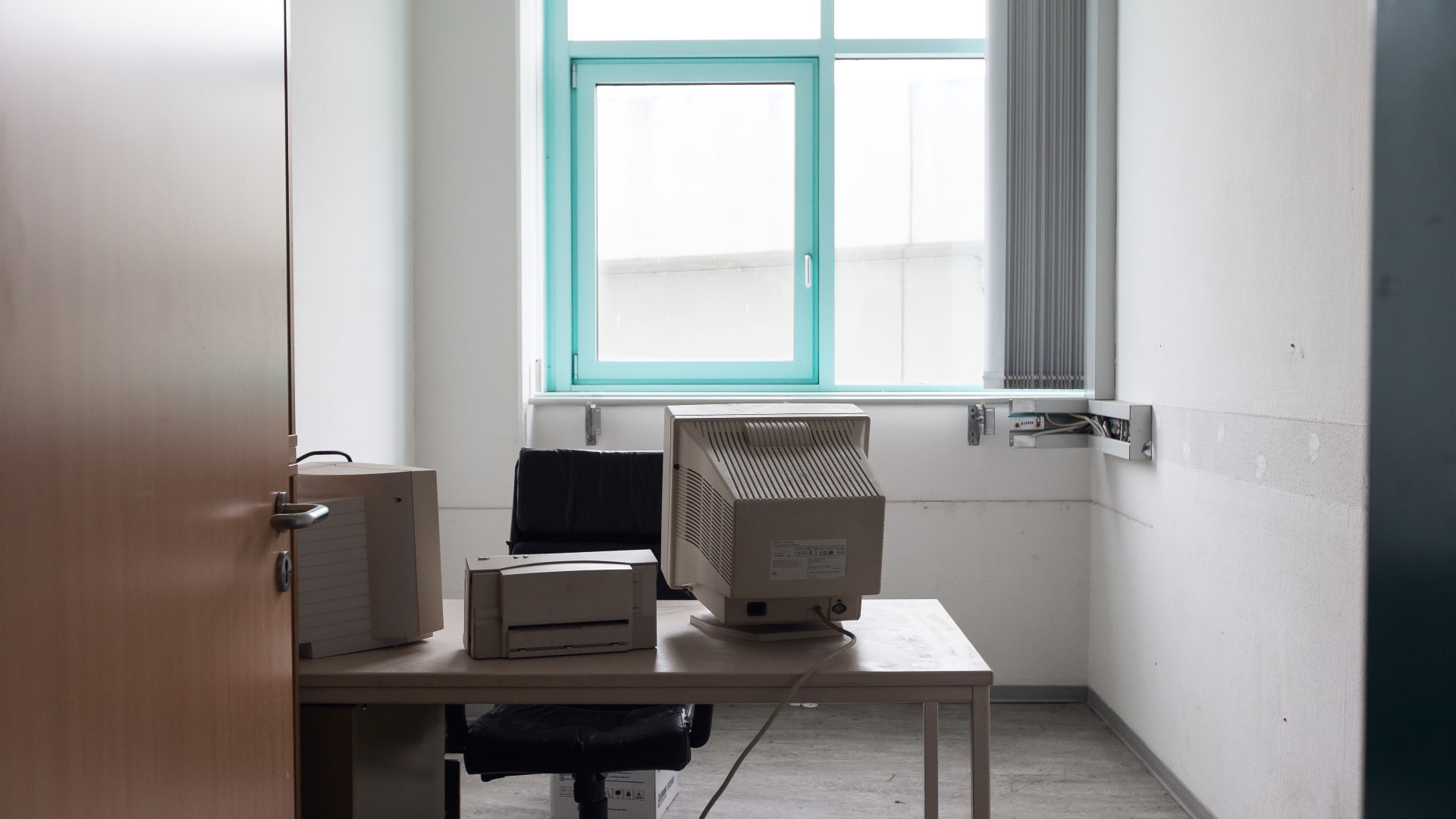




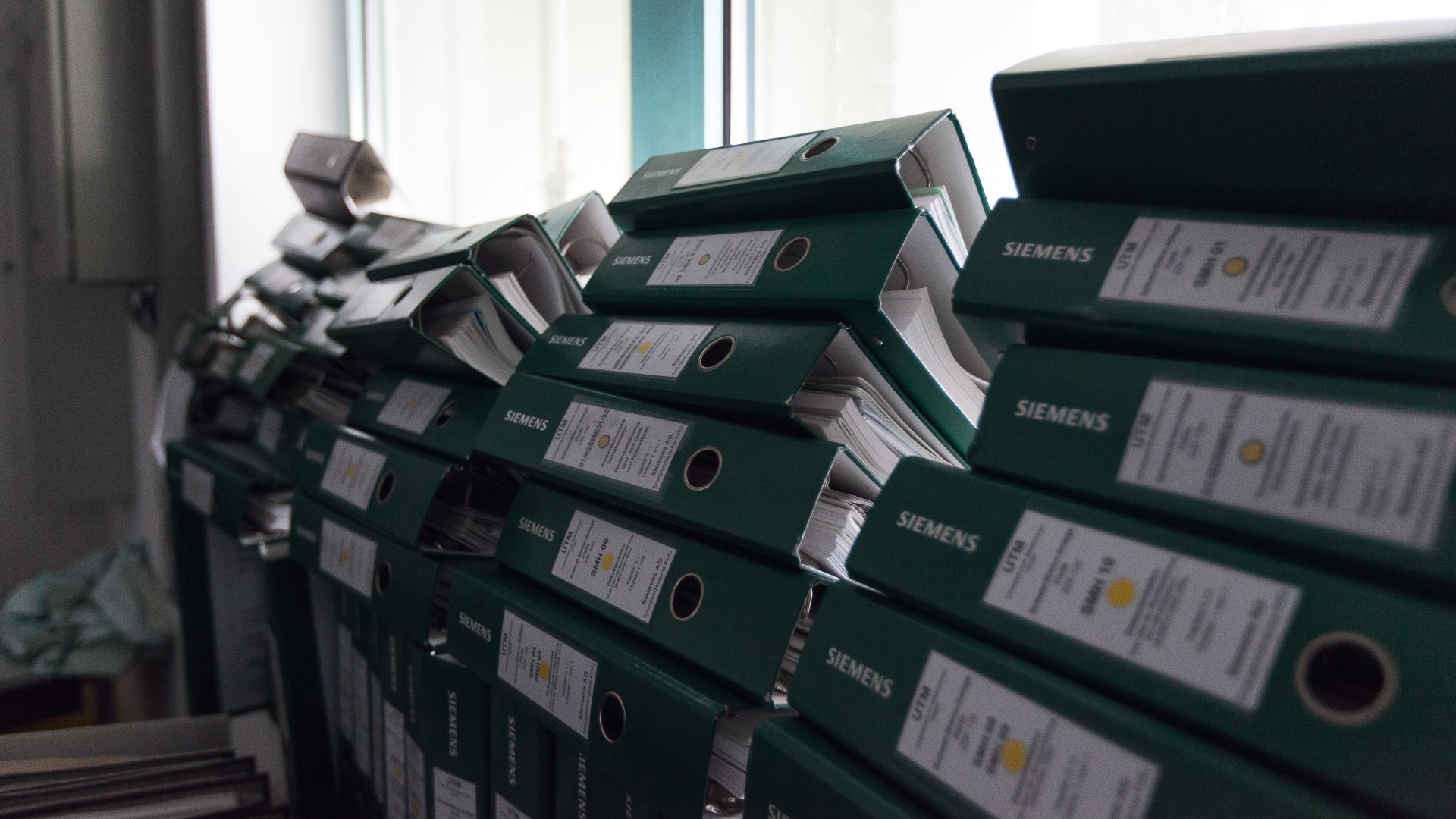


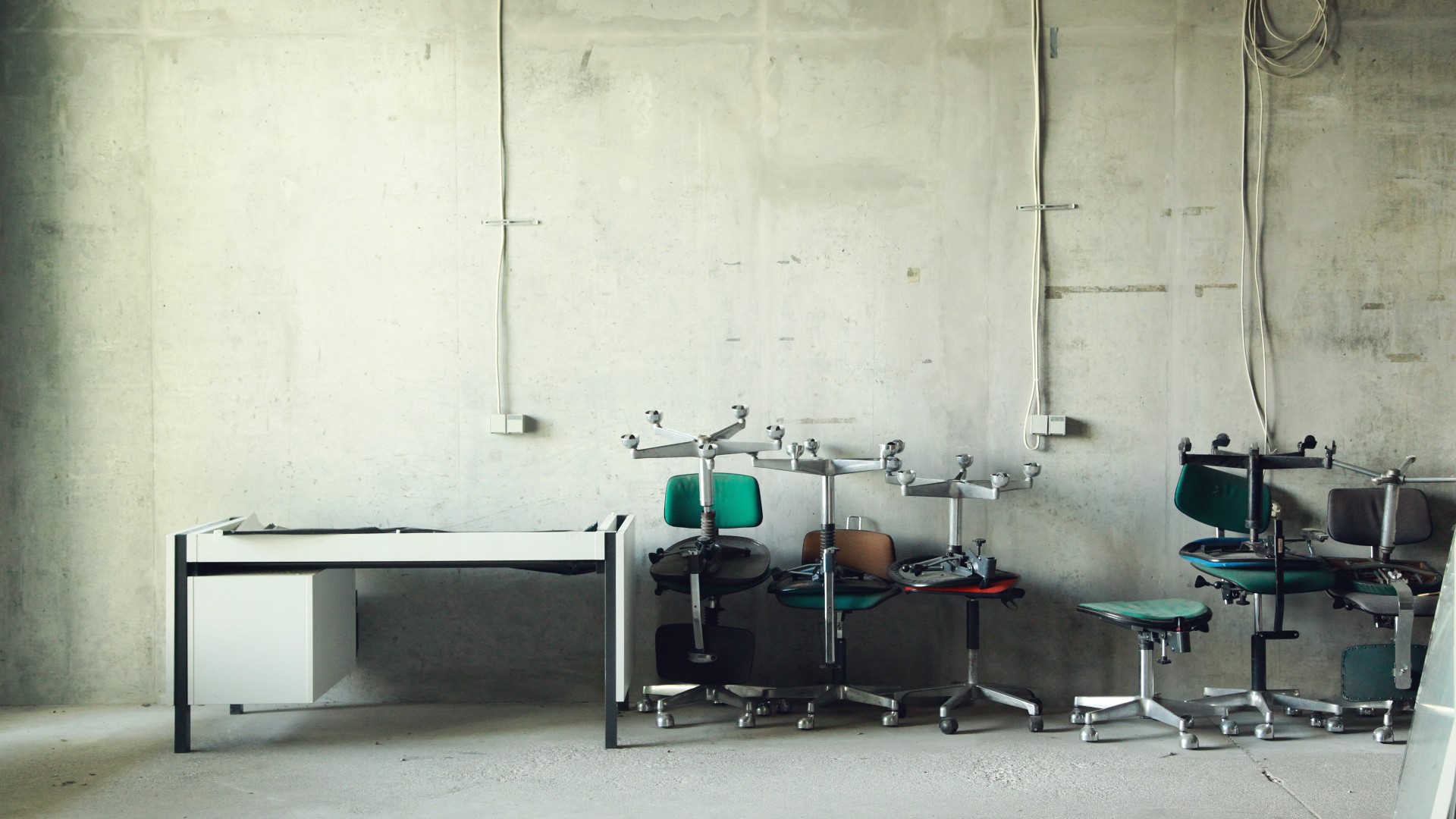
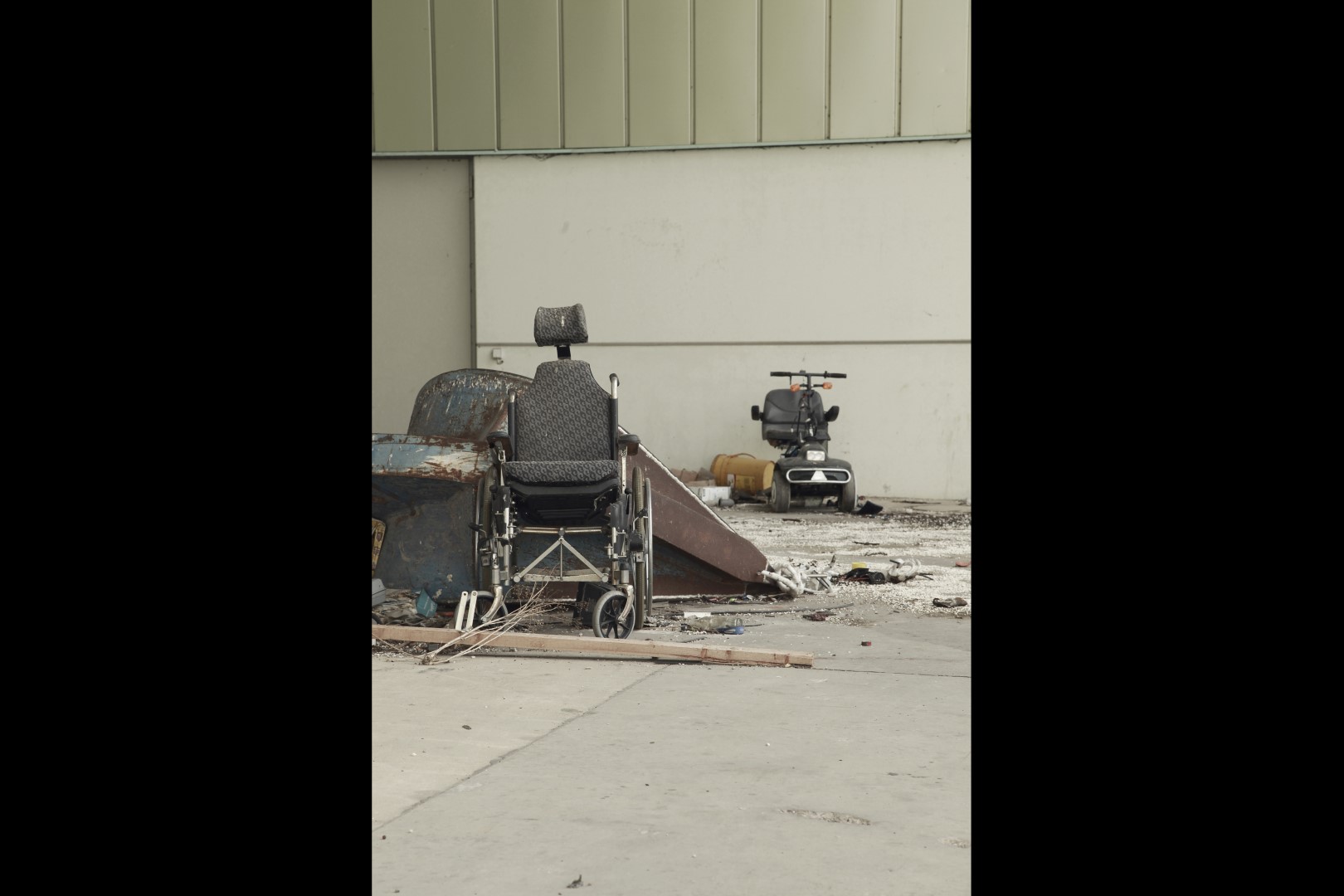


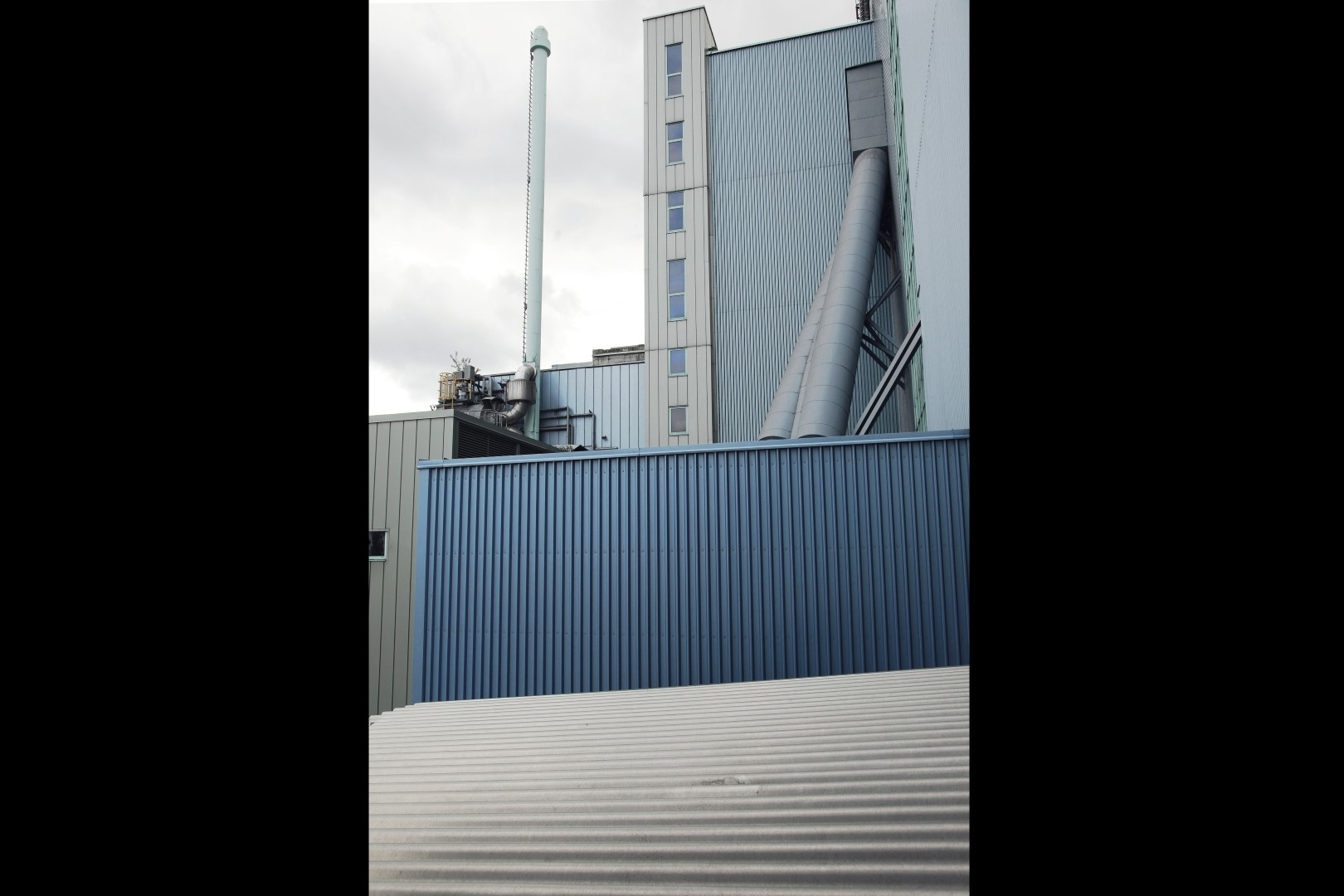
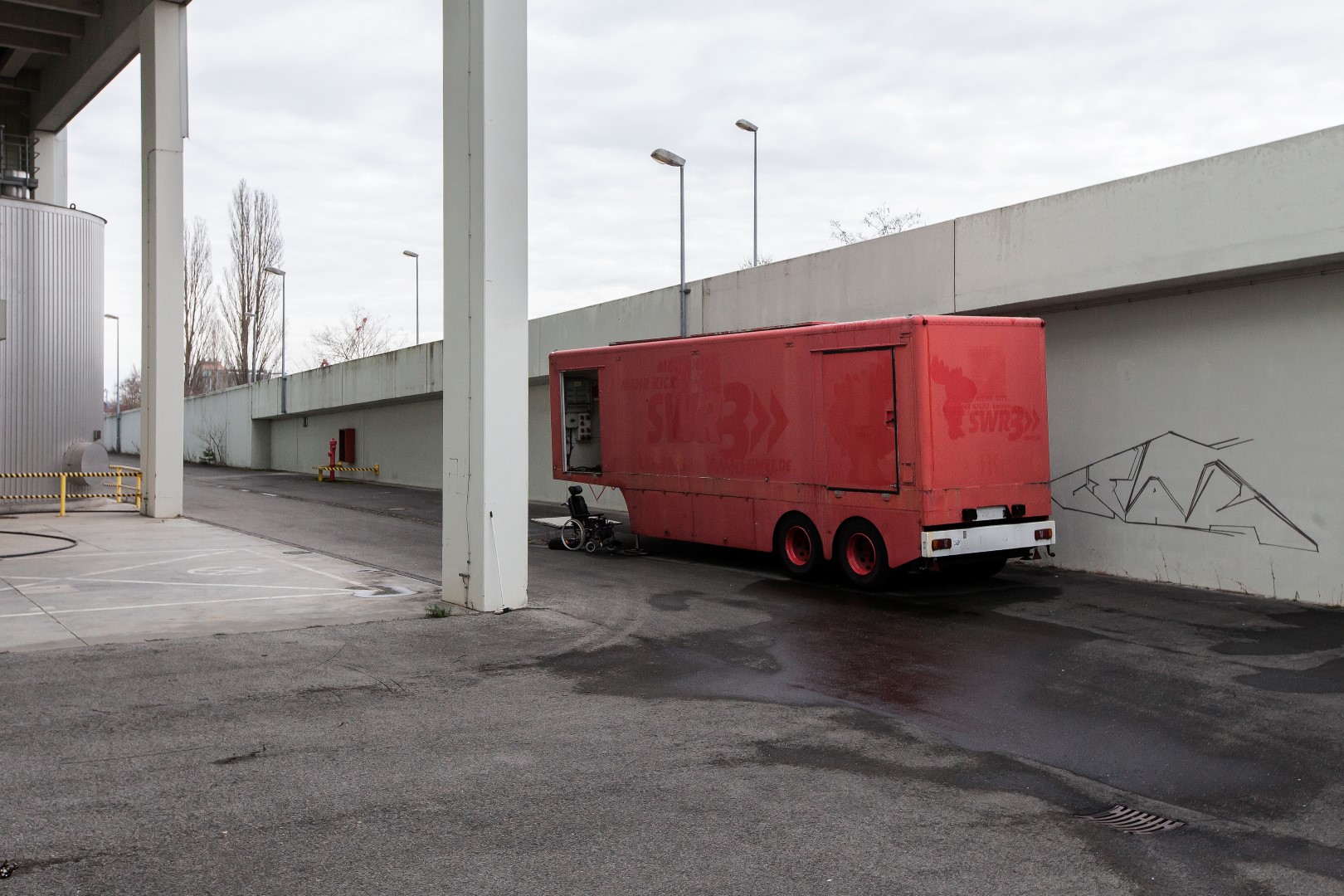


Comments